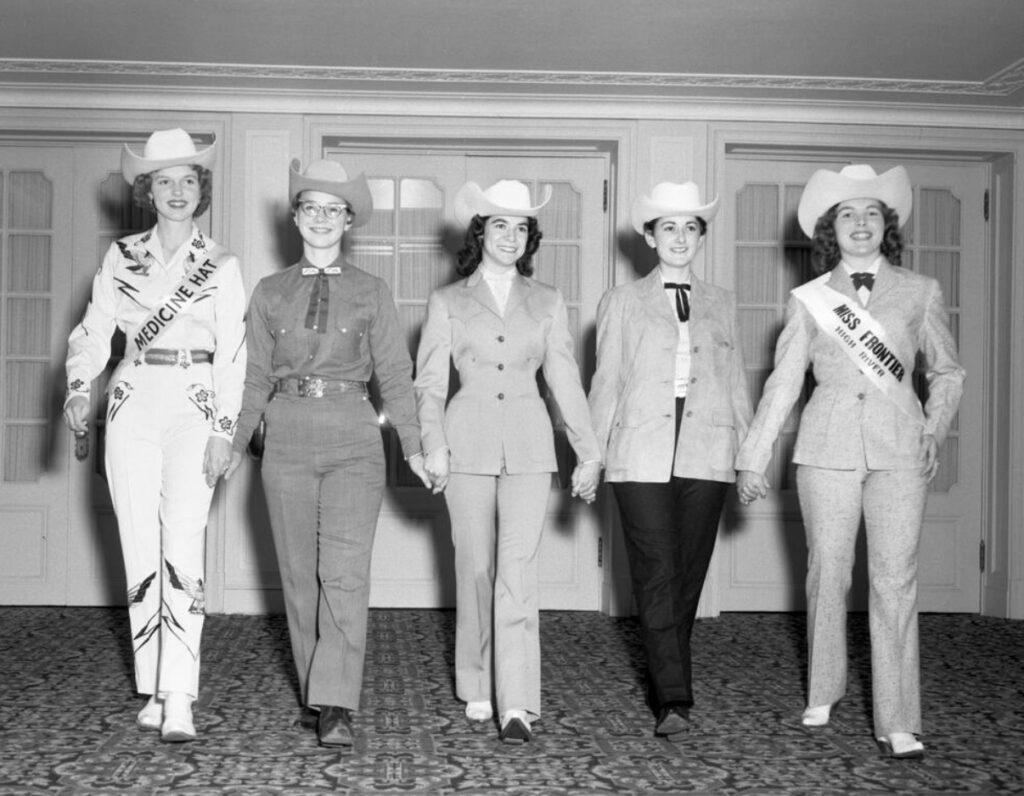Photographs are some of the most wonderful historical sources, for friends and family, certainly, but also for historians. They don’t represent the truth of the past, but a moment frozen in time that might have been candid, might have been posed or carefully crafted. Regardless, photos give us a sense of what people looked like and a record that they were present in the first place. Often images are the only evidence of a person or group of people at a rodeo if their participation was not recorded in competition results, memoirs, newspaper stories, and other written records.
Here, women pose for a Calgary photographer, who probably sold the image to the newspapers or a rodeo periodical. In posing for the shot, these women were serving an important public female role in rodeo after World War II as Rodeo Queen. Young women competed for that title and additionally served in other ceremonial roles requiring stylish Western attire – think for instance of the Dandies, riders who parade around the arena carrying flags bearing the names and logos of rodeo sponsors at some of the bigger rodeos.
Historically, women had always competed in rough stock, roping, and riding events. Yet, by the 1950s rodeo committees and governing bodies discontinued most women’s events at most rodeos. Gender norms at mid-century became more conservative and celebrated a strict division of roles between men and women, which was always an awkward fit in the West considering the “man’s work” that most ranching women did as a matter of course. Some people also recalled a number of women who had died in competition just before the war, employing that as an excuse to ban women’s events as too dangerous for the “delicate” sex. On top of that, influential rodeo cowboys noted that there was a lot more money in the sport by the 1950s. To be blunt, they sought to monopolize the money circulating in the sport so that a male competitor could make a good living as a professional athlete, something that had not been possible previously.
Of course, all the while, women were performing the behind-the-scenes labor—logistical, emotional, parenting—that our project will document.
above: “Miss Rodeo Queen contestants at Calgary Horse Show, Calgary, Alberta,” 1959-10-04, (CU1132106) by Rosettis Studio. Image courtesy of Libraries and Cultural Resources Digital Collections, University of Calgary.
